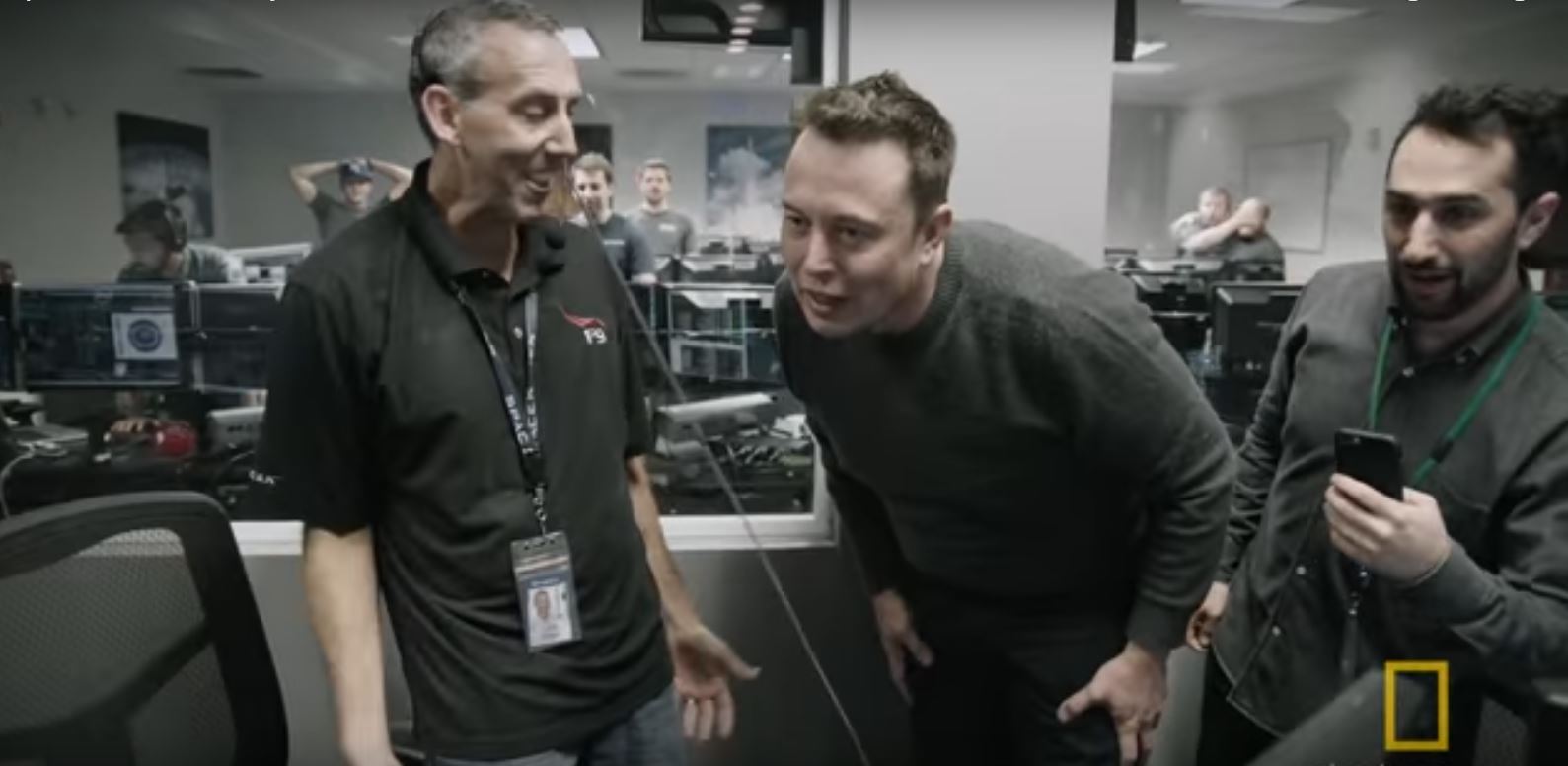Elon Musk Shows Childlike Joy (and Dread) in Rocket-Landing Video

Billionaire entrepreneur Elon Musk typically displays such an incredibly calm demeanor that it's hard to imagine him getting excited about anything.
But in a newly released video, Musk makes an uncharacteristic display of emotion, ranging from dread to unbridled joy as he watches a Falcon 9 reusable rocket booster make its historic first landing at Cape Canaveral, Florida, on Dec. 21, 2015.
The video, released by National Geographic as part of its "Mars" miniseries coverage, shows never-before-seen footage of Musk and members of the SpaceX team during the historic booster landing. In an uncommon display of emotion and energy, Musk is seen running toward the control room exclaiming, "It's standing up!"
While most large rocket designs feature a first stage that is discarded after each launch, the Falcon 9 first stage is designed to be reusable. After kicking the payload skyward, Falcon 9's first stage descends back toward Earth with the help of thrusters and lands upright on a landing pad. (This is sometimes located on a barge, moving with the swells of the ocean.) The Falcon 9 is the first orbital rocket to ever successfully land a reusable first stage booster after launch.
Multiple Falcon 9 first stage boosters boosters crashed as they attempted to touch down on the landing platform, before SpaceX made its first successful touchdown. So it's understandable when, in the video, Musk looks panicked as he runs from the control room to a place outside where he can watch the booster descend toward the landing platform after it separates from the second stage and payload.
"OK, this is bad," Musk says as he looks skyward, his face twisted into a strained look. "This is potentially bad."
But then the booster's thrusters kick on with a great burst of fire, and the large metal cylinder begins to lower its legs as it approaches the landing site. Then, in a moment that steals the breath of the SpaceX employees looking on, the booster touches down and remains upright. With childlike joy, Musk runs toward the control room, not quite yelling, "It's standing up!"
Get the Space.com Newsletter
Breaking space news, the latest updates on rocket launches, skywatching events and more!
"Holy smokes, man," Musk almost whispers as he stares in awe at the video feed of the booster, sitting quietly on the landing pad.
SpaceX has had multiple successful booster landings since that first one. (The video is not explicitly dated, but the footage of the SpaceX employees watching the launch and the footage of the rocket itself are from the December 2015 landing. The footage of the booster landing shows the rocket touching down on a land-based landing pad rather than a barge, which took place on Dec. 21 of that year).
National Geographic included the Musk video in its six-part TV series (which concluded Monday, Dec. 19) that is part fictional drama and part documentary, exploring humanity's pursuit of Mars. Musk announced plans earlier this year to eventually help colonize the Red Planet. You can learn more about National Geographic's "Mars" project and the International Mars Science Foundation at their multimedia website: www.MakeMarsHome.com.
Follow Calla Cofield @callacofield.Follow us @Spacedotcom, Facebook and Google+. Original article on Space.com.
Join our Space Forums to keep talking space on the latest missions, night sky and more! And if you have a news tip, correction or comment, let us know at: community@space.com.

Calla Cofield joined Space.com's crew in October 2014. She enjoys writing about black holes, exploding stars, ripples in space-time, science in comic books, and all the mysteries of the cosmos. Prior to joining Space.com Calla worked as a freelance writer, with her work appearing in APS News, Symmetry magazine, Scientific American, Nature News, Physics World, and others. From 2010 to 2014 she was a producer for The Physics Central Podcast. Previously, Calla worked at the American Museum of Natural History in New York City (hands down the best office building ever) and SLAC National Accelerator Laboratory in California. Calla studied physics at the University of Massachusetts, Amherst and is originally from Sandy, Utah. In 2018, Calla left Space.com to join NASA's Jet Propulsion Laboratory media team where she oversees astronomy, physics, exoplanets and the Cold Atom Lab mission. She has been underground at three of the largest particle accelerators in the world and would really like to know what the heck dark matter is. Contact Calla via: E-Mail – Twitter









